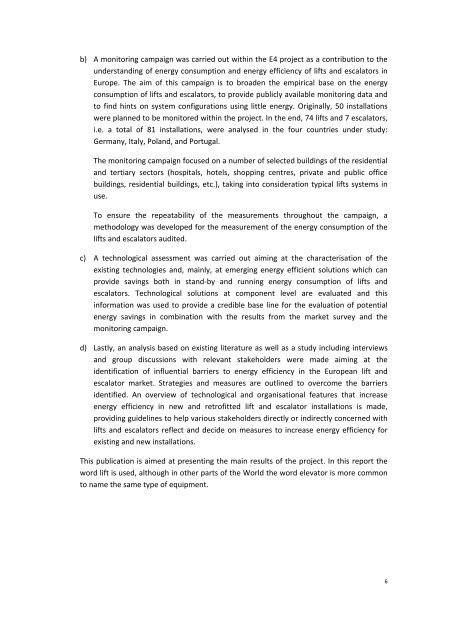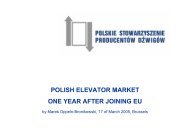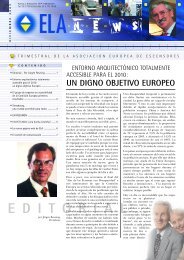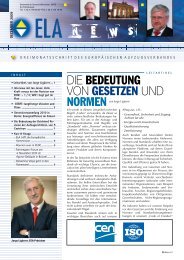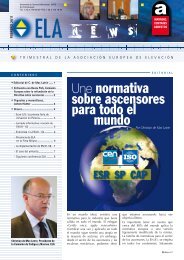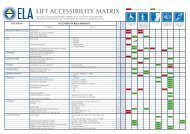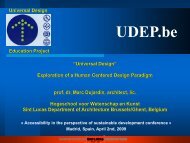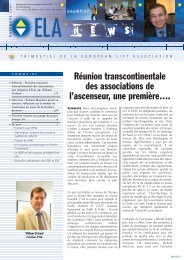WP6-Brochure-E4 brochure - ELA European Lift Association.
WP6-Brochure-E4 brochure - ELA European Lift Association.
WP6-Brochure-E4 brochure - ELA European Lift Association.
Create successful ePaper yourself
Turn your PDF publications into a flip-book with our unique Google optimized e-Paper software.
) A monitoring campaign was carried out within the <strong>E4</strong> project as a contribution to the<br />
understanding of energy consumption and energy efficiency of lifts and escalators in<br />
Europe. The aim of this campaign is to broaden the empirical base on the energy<br />
consumption of lifts and escalators, to provide publicly available monitoring data and<br />
to find hints on system configurations using little energy. Originally, 50 installations<br />
were planned to be monitored within the project. In the end, 74 lifts and 7 escalators,<br />
i.e. a total of 81 installations, were analysed in the four countries under study:<br />
Germany, Italy, Poland, and Portugal.<br />
The monitoring campaign focused on a number of selected buildings of the residential<br />
and tertiary sectors (hospitals, hotels, shopping centres, private and public office<br />
buildings, residential buildings, etc.), taking into consideration typical lifts systems in<br />
use.<br />
To ensure the repeatability of the measurements throughout the campaign, a<br />
methodology was developed for the measurement of the energy consumption of the<br />
lifts and escalators audited.<br />
c) A technological assessment was carried out aiming at the characterisation of the<br />
existing technologies and, mainly, at emerging energy efficient solutions which can<br />
provide savings both in stand‐by and running energy consumption of lifts and<br />
escalators. Technological solutions at component level are evaluated and this<br />
information was used to provide a credible base line for the evaluation of potential<br />
energy savings in combination with the results from the market survey and the<br />
monitoring campaign.<br />
d) Lastly, an analysis based on existing literature as well as a study including interviews<br />
and group discussions with relevant stakeholders were made aiming at the<br />
identification of influential barriers to energy efficiency in the <strong>European</strong> lift and<br />
escalator market. Strategies and measures are outlined to overcome the barriers<br />
identified. An overview of technological and organisational features that increase<br />
energy efficiency in new and retrofitted lift and escalator installations is made,<br />
providing guidelines to help various stakeholders directly or indirectly concerned with<br />
lifts and escalators reflect and decide on measures to increase energy efficiency for<br />
existing and new installations.<br />
This publication is aimed at presenting the main results of the project. In this report the<br />
word lift is used, although in other parts of the World the word elevator is more common<br />
to name the same type of equipment.<br />
6


